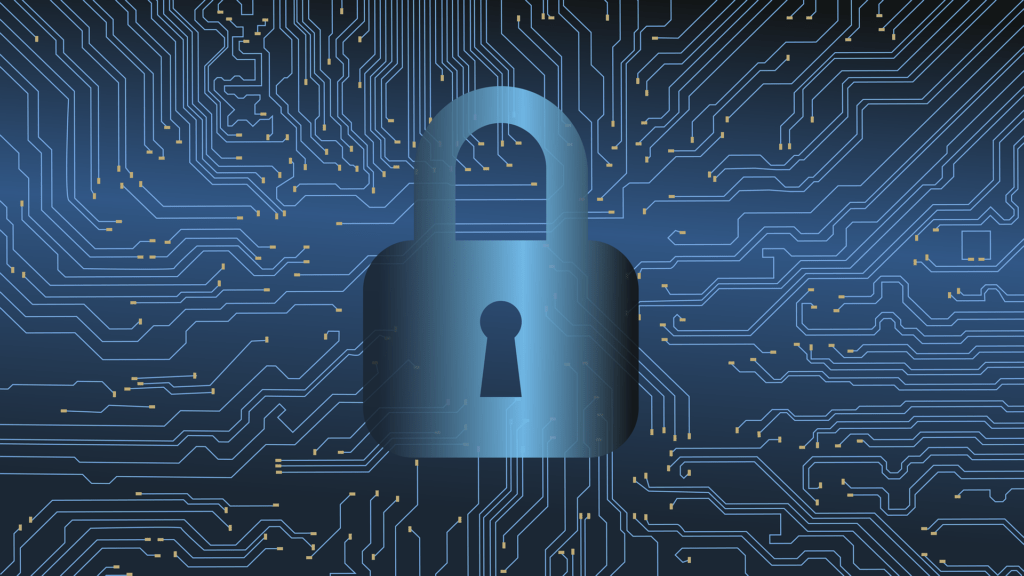For many, the term cybersecurity conjures images of competing hackers hunched over their laptops, furiously typing in dimly lit rooms until one of them shouts, “I’m in!” At which point, missile defense systems suddenly go offline, or millions of dollars disappear from the villain’s account and reappear into a secret offshore bank. While these scenes make excellent fodder for Hollywood screenwriters, the realities of cybersecurity are more mundane.
While there are undoubtedly bad actors trolling the darkest corners of the internet, they frequently target small businesses instead of enterprise or government agencies. According to a Verizon study, in 2019, 43% of security breaches involved small businesses. The motivations behind these attacks vary. Some hackers are looking for a payout, while others are conducting espionage. Another subset of attackers simply enjoys sowing chaos. However, the bottom line is clear: No matter the size of your business, or the industry it operates in, someone wants to attack you.
This topic takes on additional importance in the COVID-19 era. Companies across the world have adopted a work-from-home model, which has their employees operating remotely and communicating more than ever using digital technology. Many retail operations are also actively converting from a brick-and-mortar presence to a more eCommerce-focused approach. In this new environment, digital security becomes even more critical than it was before. With October being Cybersecurity Awareness Month, now is the perfect time to reevaluate your company’s digital security program.
Five Critical Elements of a Cybersecurity Plan
At its most basic level, cybersecurity involves protecting a company’s programs, networks, and systems from a digital attack. These unauthorized incursions typically target sensitive information like trade secrets, personal customer information, or intellectual property. Your approach may vary depending on several factors like company size, industry, and risk level. However, most cybersecurity plans cover five critical areas.
1. Application Security
This measure protects the applications on your system. Commonly used programs like web browsers, email clients and word processors are vulnerable to attack from malware and other bad actors. To protect yourself, use a good antivirus program and encrypt your data.
2. Information Security
Rather than protecting your applications, information security focuses on protecting your data. In larger companies, IT departments set up firewalls that control incoming and outgoing network traffic and prevent unauthorized access. Smaller businesses can begin this process by using strong passwords that change frequently and enabling two-factor authentication whenever possible.
3. Network Security
One common form of attack is a dedicated denial of service (DDOS), which uses a coordinated technique to overwhelm and incapacitate a company’s network. IT departments protect their networks from these attacks by updating their firewalls regularly and through third-party network security tools.
4. Disaster Recovery Planning
Even the most prepared companies can’t prevent all attacks. That’s why every cybersecurity plan should include a process for backing up and accessing data that’s been stolen or destroyed. These backups are typically stored both locally and on the cloud. If your critical information is held hostage by a bad actor or even accidentally destroyed, you can quickly access backups and get up-and-running once again.
5. Operational Security
Hackers are increasingly targeting C-level executives as they attempt to access critical information. This approach is understandable because business leaders traffic in high-level and sensitive information more regularly than front-line employees. Operational security seeks to coordinate with management to ensure they’re employing best user practices to keep operational information protected.
Where Small Businesses Are Most Vulnerable
Of course, not every business has C-level executives or a dedicated IT team. However, almost every organization has a website they rely on to communicate with stakeholders or sell products and process payments. As a result, businesses are often most vulnerable to attack via their websites.
These attacks could take several different forms. Some hackers might seek to intercept the payments running through a site. Others might target bank information or personal user data. Some attackers take over their target’s domain and point it towards another website. In some extreme cases, hackers installed malicious software on their victims’ websites that helped them mine cryptocurrency. The consequences of these attacks can be widespread. Under the most benign circumstances, your site suffers minor performance issues. In the worst-case scenario, you lose revenue, are exposed to liability, and lose the trust of your valued customers.
Signs Your Website Has Been Hacked
Fortunately, there are signs to watch for that may signal a hacking attempt. If you notice your site running more slowly than usual or you’re unable to access certain pages, it’s a good indicator that you’ve been attacked. In these situations, you can take a couple of actions to regain control.
- Contact your hosting provider immediately to let them know. They may have tools and suggestions that will help.
- Change all your passwords related to the site, including email. If you have multiple site users, have them update their passwords as well.
- Backup your website and update your content management system to the latest version.
Easy Steps to Prevent a Website Hack
Of course, nobody wants to deal with a website hack, especially this close to the holiday shopping season. However, you can take several easy steps that will make your website less vulnerable to attack.
Start by updating your website regularly. Developers release software patches whenever they detect new threats. By running the latest version of your website, you can protect yourself against known vulnerabilities. The same is true for your hosting plugins, so update those regularly as well. As an added layer of protection, website owners can install a web application firewall that monitors incoming and outgoing traffic to your site. Following these three steps will help keep your website secure from most attacks.
Assess Your Weaknesses and Take Action
The digital frontier can be a scary place where real threats exist. While you’ll likely never have to face down that super-hacker in real life, it’s still critical to soberly assess the areas where you’re vulnerable. Then, create a plan that addresses those weaknesses in ongoing ways. These amazing digital tools are a way of life for all of us now. Securing them should be just as important.
- Secure Your Digital Life During Cybersecurity Awareness Month - October 28, 2020



